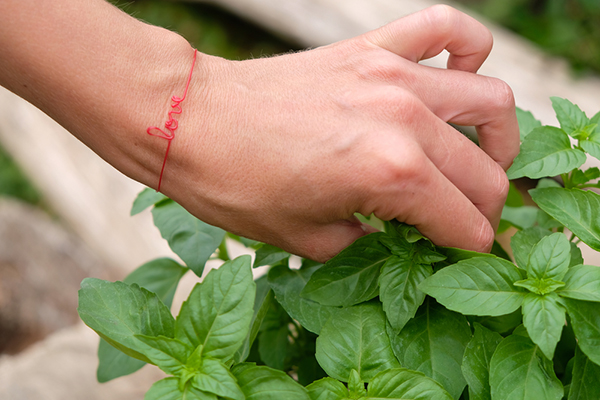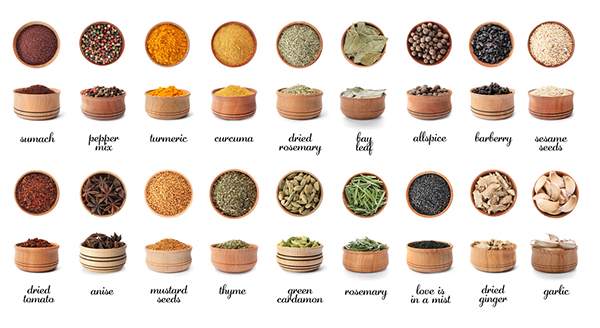Bitter Herbs: Significance, Uses, and Biblical Importance Bitter herbs have a rich history and hold significant cultural, culinary, and medicinal importance. From their crucial role in Passover traditions to their mention in the Bible, these herbs are revered for their distinctive flavors and health benefits. This article delves into what bitter herbs are, their […]
How to Dry Herbs at Home: A Comprehensive Guide

Drying herbs is a practical and cost-effective way to preserve their flavor and medicinal properties. Whether you’re a culinary enthusiast, a gardener, or someone who appreciates natural remedies, knowing how to dry fresh herbs can ensure you have a steady supply throughout the year. This guide will cover various methods, including how to dry herbs at home, how to dry out herbs, and specific techniques like using an oven. Additionally, we’ll review a highly recommended book and a top-rated Amazon product on this topic.
The Importance of Drying Herbs
Drying herbs is not just about extending their shelf life; it’s also about capturing their essence and potency. Fresh herbs can wilt and lose their flavor quickly, but when properly dried, they can last for months without losing their aroma or medicinal benefits. Dried herbs are more concentrated, meaning you can use less to achieve the same flavor intensity in cooking.
How to Dry Fresh Herbs: Basic Methods
Air Drying
Air drying is the most traditional and straightforward method. It’s ideal for herbs with low moisture content, such as rosemary, thyme, oregano, and sage.
Steps:
- Harvesting: Pick your herbs in the morning after the dew has evaporated but before the sun gets too hot.
- Preparation: Remove any damaged leaves and wash the herbs gently. Pat them dry with a paper towel.
- Bundling: Gather small bunches of herbs and tie the stems together with a string or rubber band.
- Hanging: Hang the bundles upside down in a well-ventilated, dark, and dry area. Ensure they are not exposed to direct sunlight to preserve their color and essential oils.
- Storage: After 1-2 weeks, when the herbs are dry and crumbly, store them in airtight containers away from light and heat.
How to Dry Herbs at Home Using a Dehydrator
A food dehydrator is an excellent investment if you regularly dry herbs. It’s faster than air drying and ensures consistent results.
Steps:
- Preparation: Follow the same harvesting and preparation steps as for air drying.
- Arranging: Place the herbs in a single layer on the dehydrator trays, ensuring good air circulation.
- Setting: Set the dehydrator to 95-115°F (35-46°C) and dry for 1-4 hours, depending on the herb’s moisture content.
- Checking: Check the herbs periodically. They should be dry and crumble easily when rubbed between your fingers.
- Storage: Store the dried herbs in airtight containers.
How to Dry Out Herbs Using an Oven
Using an oven is a quick method, especially if you don’t have a dehydrator. It’s best for herbs with higher moisture content, like basil, mint, and tarragon.
Steps:
- Preparation: Harvest and wash the herbs, then pat them dry.
- Arranging: Spread the herbs in a single layer on a baking sheet lined with parchment paper.
- Drying: Set your oven to the lowest temperature (around 150-170°F or 65-75°C). Place the herbs in the oven, leaving the door slightly ajar to allow moisture to escape.
- Checking: Dry for 1-2 hours, checking frequently to ensure they do not burn. Herbs are ready when they crumble easily.
- Storage: Once cooled, store the herbs in airtight containers away from light and heat.
Storing Dried Herbs
Proper storage is crucial to maintaining the quality of your dried herbs. Use airtight containers, such as glass jars or vacuum-sealed bags, and keep them in a cool, dark place. Label your containers with the herb’s name and drying date to keep track of freshness.
Book Review: “The Complete Book of Herbs: A Practical Guide to Growing and Using Herbs” by Lesley Bremness
For those passionate about herbs, “The Complete Book of Herbs” by Lesley Bremness is a treasure trove of information. This comprehensive guide covers everything from growing and harvesting herbs to drying and using them in various applications, including cooking, medicine, and cosmetics.
Highlights:
- In-depth Information: Detailed profiles of over 100 herbs, including their history, cultivation, and uses.
- Practical Tips: Step-by-step instructions for drying, storing, and using herbs.
- Beautiful Illustrations: Richly illustrated with photos and drawings that make it a visual delight.
- Recipes and Remedies: Includes numerous recipes for culinary delights, herbal teas, and natural remedies.
Review:
Lesley Bremness’s book is highly regarded for its thorough and accessible approach. Whether you’re a beginner or an experienced herbalist, you’ll find valuable insights and practical advice. The detailed instructions and beautiful illustrations make it a pleasure to read and use as a reference. It’s a must-have for anyone serious about herbs.
Amazon Product Review: COSORI Premium Food Dehydrator Machine
The COSORI Premium Food Dehydrator Machine is a top-rated product on Amazon, perfect for drying herbs efficiently and effectively.
Features:
- Adjustable Temperature: The temperature range of 95-165°F allows for precise drying of different types of herbs.
- Stainless Steel Trays: Durable and easy to clean, the stainless steel trays ensure even drying.
- Digital Control Panel: The intuitive control panel makes it easy to set the desired temperature and drying time.
- Quiet Operation: Designed to operate quietly, making it ideal for home use.
Customer Feedback:
Customers rave about the COSORI Premium Food Dehydrator for its ease of use and consistent results. Many appreciate the adjustable temperature settings, which allow them to dry a wide variety of herbs perfectly. The stainless steel trays are praised for their durability and ease of cleaning. Overall, users find it a valuable addition to their kitchen for preserving herbs and other foods.
Review:
The COSORI Premium Food Dehydrator Machine is an excellent choice for anyone serious about drying herbs at home. Its adjustable temperature settings and quiet operation make it versatile and convenient. The positive customer reviews highlight its reliability and effectiveness, making it a worthwhile investment for herb enthusiasts.
Drying herbs at home is a rewarding and practical way to preserve their flavor and medicinal properties. Whether you choose air drying, using a dehydrator, or an oven, the key is to ensure proper preparation and storage to maintain the herbs’ quality. Additionally, resources like “The Complete Book of Herbs” and tools like the COSORI Premium Food Dehydrator can provide further guidance and efficiency. Start drying your herbs today and enjoy their benefits year-round.






